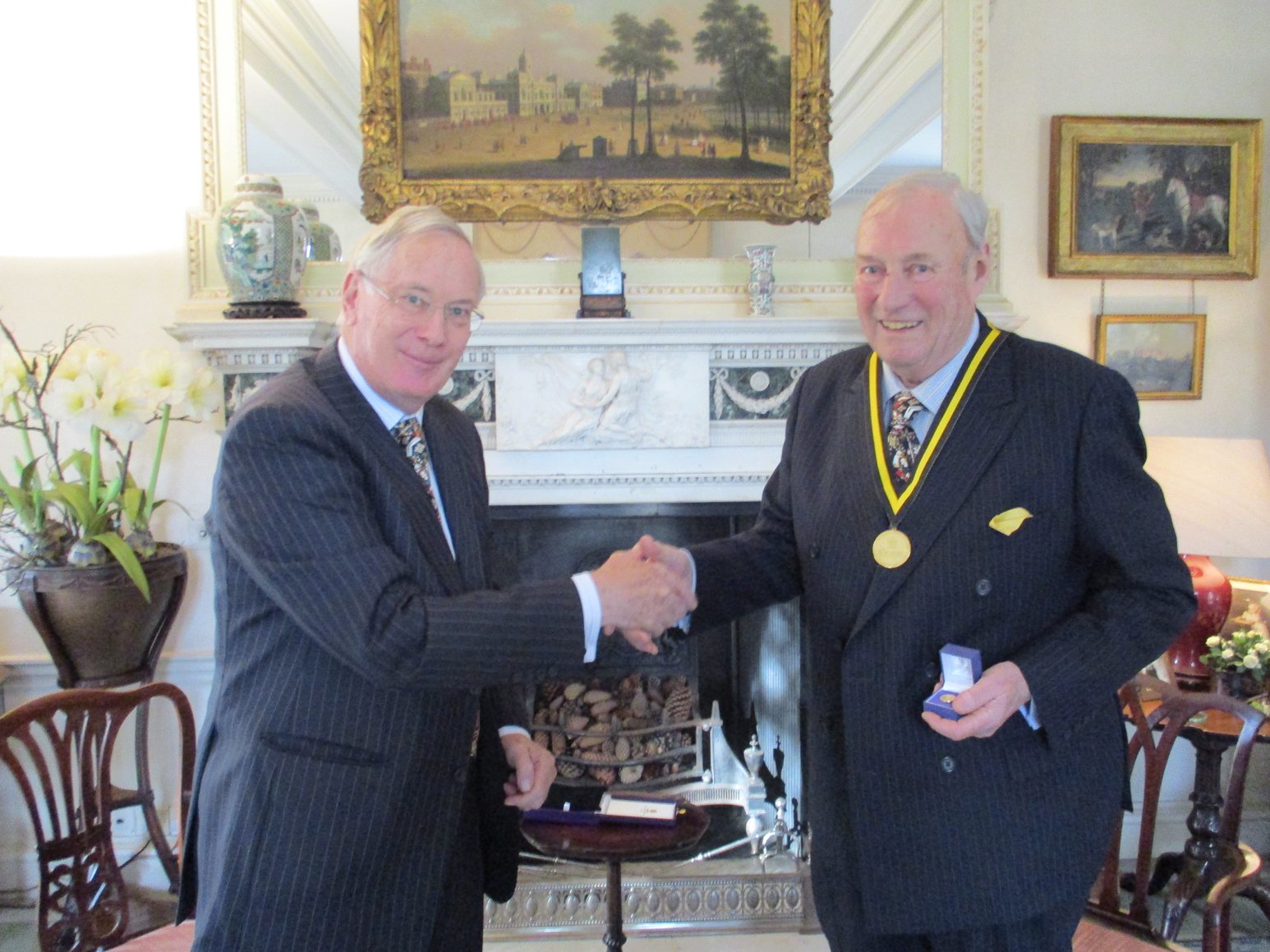The 2016 Duke of Gloucester Gold Medal for outstanding lifetime achievement in stonemasonry has been awarded to Dr Dick Reid OBE.
Presented jointly by the Masons Livery Company and Stone Federation Great Britain, the Medal recognises outstanding contributions to the craft of stonemasonry, including passing skills to the next generation.
The idea for the Medal was mooted in the 1980s when it was noted that the craft did not have any kind of recognition through a supreme accolade.
Other industries had their Oscars and Grammies, their Pulitzers and their Turners so it was long overdue that our industry had some way of recognising people who had reached the pinnacle of achievement in stone.
His Royal Highness The Duke of Gloucester, an architect with an affinity for stone and a Liveryman of the Masons Livery Company since 1975, was instrumental in developing the Award and was delighted for it to be associated with his title.
This year's winner, Dr Dick Reid, was born in 1934 in Newcastle upon Tyne. He excelled at arts and crafts at school and was spotted by Ralph Hedley, who offered him an apprenticeship in his studio as a carver in stone and wood. The training was spread over five years and included attending Newcastle Art School.
On completion of his apprenticeship, Dr Reid served in the army, obtaining the rank of captain. When he left the regular Army he served in the Territorials for a further 10 years.
He set up a stonemasonry workshop in York, establishing himself as an expert in restoration, conservation and new build schemes, both nationally and internationally. His strength lay not only in his knowledge but also in his hand skills, and he was always a hands-on sculptor, stonemason and carver.
Dr Dick Reid has been involved in many projects over his extensive career. They have included such high profile projects as: helping to repair the damage done by fire in Windsor Castle; The Sanctuary at Highgrove; Fairfax House, York; Carlisle Cathedral; the redundant church of St Sampson’s, York; Rockland St Peter’s Church, Norfolk. He has repaired and reconstructed numerous fireplaces at Althrop, Spencer House and Chatelherault in Scotland. He has recreated numerous staircases and other architectural details from 18th and 19th century designs. A lettercutter of distinction, among his work is the Countess of Pembroke’s memorial in Westminster Abbey, but there are so many of his inscriptions on memorial tablets on church walls and headstones in Yorkshire and further afielfd.
In the course of his career Dick became involved with a number of institutions, and he considered it a great honour in 1989 to be invited by the Prince of Wales to take an active part in the Prince's Institute of Architecture. The Prince was concerned that classical architecture was not being taught anywhere and the idea of the institute was to remedy that by offering summer schools in England and America, that became a great success. Dick was one of the lecturers and also a trustee of the Institute, giving up eight weeks every year for 12 years to lecture at the summer schools.
Generous with his time and his skills, Dick served on various committees and commissions, local and national, to share his knowledge and enthusiasm.
With his wife, Elizabeth, he has promoted and encouraged the National Association of Decorative & Fine Arts Societies (NADFAS). In recognition of his contribution to the art and craft of masonry and sculpture he has received a doctorate from the University of York and was made an OBE.
Natural Stone Specialist magazine joins Stone Federation Great Britain and the Worshipful Company of Masons in offering Dick Reid their warmest congratulations.

